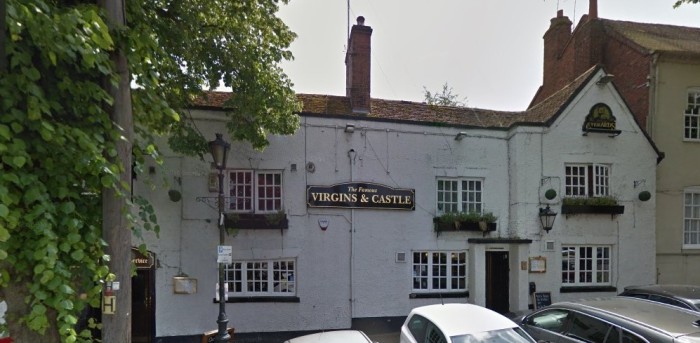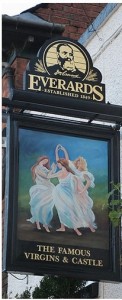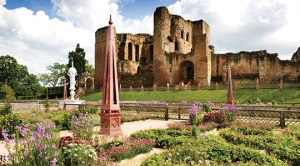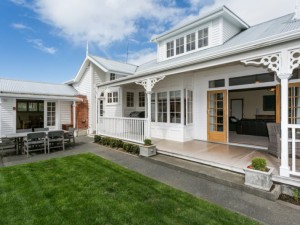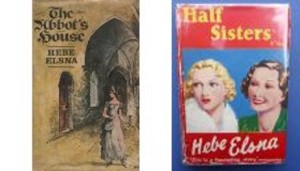It should be noted from the offset that there are no cabbages in this post.
‘The Walrus and the Carpenter’ from Alice Through the Looking Glass (Lewis Carroll 1871) although Disney placed them in Alice in Wonderland (1951)
And it has nothing to do with anything much but there you go. The Kings in question are not even male but a follow up to the previous post. It is ironic to have so many Kings as, societally speaking, there are fewer kings than dukes or earls except at RMIG: Dukes 4, Earl[e] 1 but Kings 10. Unfortunately some of the Kings are recorded as pupils but other information is guesswork at best.
Dorothy was on roll 1905, when she won a prize for proficiency, and she left in 1910. In 1914, she visited the School on Ex-pupils’ Day. In 1921, Massonica [sic] records her living in Maida Vale but all attempts to pin her down result in oddities that do not seem right. For example, there is one in the 1911 census of the right age but the occupation is tie-maker. This is a rather lowly profession for an educated, middle-class girl. Perhaps when the 1921 census become available, she will finally be tracked down.
Elizabeth Louisa was born in 1883 to Robert & Matilda King. He was a master shoemaker for the Royal Marines and Elizabeth became a pupil after his death. She left in 1899 and that is the last certain trace of her although there is a possibility that she went to Australia and died in Queensland in 1943.
Alice Vera was one of two sisters who attended RMIG and much more is known about her parents than about Alice. Strangely, she also lived in Maida Vale (1933, OMGA member). Maybe there is a black hole in Maida Vale that only sucks in female Kings? After 1933, there is no further trace: no travel docs; no marriage; no death record; she is not mentioned on mother’s probate although her sister is.
As we are on the subject of this King family, let’s introduce her sister, Gwenda Brinkley (1909-1991). She is recorded as the Junior Masonic School Captain in 1920, the year she won a prize for drawing and painting.
She was still at the Junior School in 1921 but moved to the Seniors shortly afterwards. She left in 1924 and was training as a nurse (Masonica 1932) and living in Maida Vale in 1933 – possibly with her sister – before marrying Frank Stanley Cooper. In 1939, she is recorded at The Knoll, Gwynfa, Beckenham, Kent. She seems to have stayed in the area throughout the rest of her life and died on 1 Feb 1991, in Beckenham.
Alice & Gwenda’s parents were Thomas Brinkley King & Alice Twyman. His death is recorded as April 19th 1918 and his mother died just five days later and is buried in the same plot. It is possible to surmise that both were victims of the ‘Spanish Flu’ epidemic. Alice, previously an assistant in the glove department of an Islington draper’s, outlived her husband by 24 years but is buried alongside him and her mother-in-law in Norwood Cemetery. She died in 1942 at ‘the British Home & Hospital for Incurables’

The place still exists but now just called British Home. However on the buildings can be seen the words ‘British Home and Hospital for Incurables’ and ‘Entirely dependent on voluntary donations.’
It was her probate that confirmed Gwenda’s marriage but failed to mention the other daughter, possibly implying that Alice had pre-deceased her. No evidence has been found for this so it could have been a family falling-out or an oversight or an agreement that Alice Vera, as the younger daughter, would not be named or … Well you get the picture. We have no idea why her name is not there. Or indeed where she is.
Two other King sisters were pupils. This, despite the rule that no sisters were to be admitted, the idea being to help as many families as possible. Irene Norah and Constance Winifred Joan were contemporaneous with the previous King sisters. Irene (1907-1992) was there in 1918, passed Junior Cambridge in 1922 and Senior Cambridge in 1924. Less is recorded of Constance’s school career, but both girls left in 1924 as they were going to Shanghai with their mother and brother. That they took up residence there is shown by another travel document in 1928 when Irene returned to UK with her residence given as China. Her UK address was c/o Mrs Mardlin, 3 Rosecroft Ave, Hampstead and this is the address where we find Constance in 1939. Intriguingly, Constance’s occupation is ‘authoress’ but quite what she was authoring is unknown. Their father had been a newspaper proprietor and printer but she is clearly ‘authoress’ not journalist. Irene’s occupation was nursing. In 1934, she is listed as a nurse discharged from British Merchant service, the papers describing her as 5ft tall with dark hair, brown eyes and a fair complexion.
But the family had not finished travelling yet as in 1957, Constance, Irene and their mother all went to Canada. This does not appear to be an emigration as their UK address was Rose Cottage, Drigg, Holmrook, Cumberland and it is here that we find the sisters in 1992 (when Irene died) and 1997 (when Constance died).
Rose Cottage still stands. It is one of 8 listed buildings in a tiny village not far from a glorious beach. The biggest drawback is that between the beach and the village is a Low level Waste Repository site.

Emily Beatrice (1871-1951) was tricky to track down although it all became a little clearer with the realisation that she was recorded as Emily Beatrice at school but was actually Beatrice Emily. She was elected to the School in 1880 as No 42 of 54 candidates which says much about the demands on the School. The confusion continues with school records which state that in 1885 she won 3rd prize for proficiency and that in 1886 she was awarded exactly the same prize. Then on 23 June 1887, Miss Davis wrote of her (as girls due to leave school that day) she ‘has been a good girl and is a prefect; she has passed Cambridge Local.’ Fine – except that on 24 March 1887 the same person wrote of her that she had ‘satisfied examiners; has since left and is engaged in teaching’. So when precisely she left and why there is a discrepancy is unclear. There does not appear to be another Emily Beatrice or Beatrice Emily in the School. Hmm – a mystery unlikely to be resolved.
She was definitely a teacher though – as per the 1891 and 1901 census returns in Essex. She married in 1903 and by 1939, she had moved to Sussex, first to Hastings and then St Leonards, where she died in 1951.
Joan Edith Trustful was born in 1916. The reason for the unusual name Trustful is unknown. Her parents were double Kings as the mother’s maiden name was also King so Trustful is not a family name. She arrived at the School in 1926 and passed Junior Cambridge in 1931 with distinctions in religious knowledge and history. Not surprisingly, in 1932 she won prizes in Religious Knowledge and History, before leaving and attending Pitman’s College. In 1934 she had a post as a shorthand typist with Mabie, Todd & Co in Oxford St. They had branches worldwide and the company had become the largest gold pen manufacturers in the world.

Joan continued to work as a shorthand typist and is recorded thus in 1939 before she married in 1941. She remained a member of OMGA throughout her life and Masonica 1995 reports her death on 14th July 1994 after a short stay in hospital.
Margery Mary (1915-2002) is much better known to OMGA as she became the President of the organisation. She arrived at the School as an orphan and the School became her alma mater, providing her with all the support she needed. In 1930 she passed Junior Cambridge and was sub editor for Machio (school magazine). She won prizes for English Literature and Best Prefect and the following year, she topped that by becoming the Gold Medallist. But she hadn’t finished with the prizes as she completed her illustrious school career by passing ‘school cert’ with honours and taking prizes in French, Latin and History. The School at this stage was about to move out of London and Margery wrote an article about the Prefects’ visit to the new school site in 1933.

Shortly after the visit, Margery went to Holloway College from where (1936) she earned BA Hons in History. The School, very sensibly, did not want to lose one of its star pupils and so Margery returned to the fold as assistant history mistress. She may never have been a pupil at Rickmansworth but it is where she began her career. In 1947, she took a post in Rochester High School for Girls and was there for 18 years until she married, late in life: she was 50, he was 75. After marriage, the couple lived in Kent and Margery Mary Steer died on 23rd May 2002 in Whitstable.
Definitely no cabbages but a few kings.










































